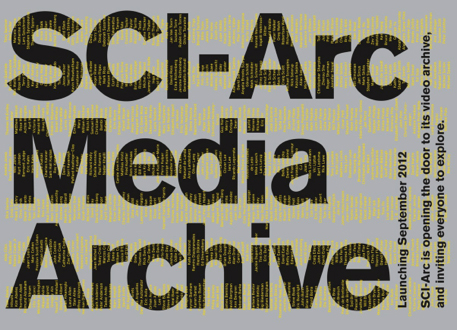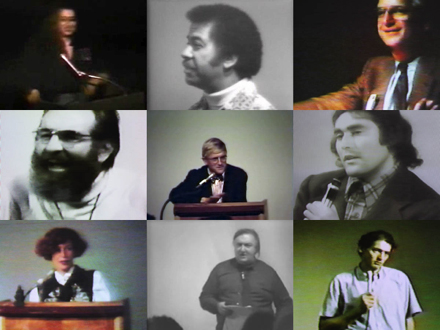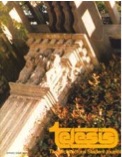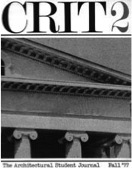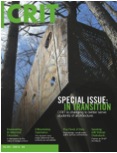Graham James with Rachel Isaac-Menard (about AMPS – Ravensbourne University College; Florida State University)
ARCHITECTURE_MEDIA_POLITICS_SOCIETY is a new online forum and academic resource repository and fully peer-reviewed, open access academic journal. ISSN 2050-9006
It is a forum for the analysis of architecture in the mediated environment of contemporary culture. It seeks to expand an understanding of architecture and its relationship with media, politics and society in its broadest sense. It is a unique project that combines the work of information specialists and academics.
The origins of the journal were in a collaboration between the two current editors on an Arts and Humanities Research Council (AHRC) funding bid. Although that particular bid was not successful, they developed the project further and it is now hosted on the web site. It is called Architecture as Political Image and investigates the use of architecture in political campaign imagery in the United States and the United Kingdom.
Identifying not only a lack of material on this particular subject research area, but on the sometimes direct relationships between politics and architecture in general, Dr Graham Cairns and Rachel Isaac Menard developed the project into the forum / journal ARCHITECTURE MEDIA POLITICS SOCIETY. The journal has now been running since September 2012 and intends to fill a subject void in current academic publishing.
Beyond this however, the project attempts to develop a closer and more dynamic relationship between academics, researchers and information specialists in a number of ways. The intention is to run a resource repository that has five specific functions.
The first of these functions is to offer a discussion forum and networking venue for information specialists in the areas of interest for the journal. A double blind peer reviewed paper, written by a librarian, will be published every two months. It will set the theme of a discussion forum between members of the Information Services Committee and external participants. Dedicated exclusively to librarians, it is hoped that informative discussions can take place and that networking can be instigated between users of the site.
The second and third functions of the repository are related to the journal’s overall themes. They are the AMPS Critical Review section which will be updated monthly and a Current Events section to be updated on a rolling basis. The critical reviews will be double blind peer reviewed and can be written by any contributor to AMPS. It is expected that the reviews will be primarily of books but can also include films, documentaries or any other relevant events or publications. The aim of the Current Events section is to offer a wider range of shorter reviews, conference postings and calls for papers etc. This listing will include publically available brief descriptions.
The fourth and fifth functions of the repository are more specifically related to the hosted project. They are a Websites Index – Archive and a Research Guide. The Websites Index lists sites currently active and dealing with political communication and / or the relationship between architecture and politics in terms of direct policy or image. The Research Guide lists printed and audio-visual materials on the same themes. The intention is to make the Websites Index an internationally accessible research source and eventually create an archive that will be presented for collection to a relevant institution such as the Library of Congress, the British Library and / or the Canadian Centre for Architecture. The Research Guide will be an extensive and specialised bibliography categorised into materials relevant to political communication, architecture as contemporary symbolism and media studies. At the end of the “Architecture as Political Image” project, both a website index and bibliography will be set up based on the next hosted project.
The editors are also seeking to combine the skills and knowledge of researchers and information specialists through the medium of academic conferences. They are currently engaged in conversations with a number of international institutions about hosting a conference on the journal’s themes which will produce photographic and written materials for eventual archiving. This would include papers but also extended bibliographic lists and source indexes.
These innovative features are embedded in the standard structure of an academic journal. Here too however, a number of particular characteristics distinguish the project. Its theme is more explicit in its political slant than is normal and, in addition, it is explicit about its treatment of architecture a cultural phenomenon that cannot be divorced from other disciplines.
It publishes one article online each month and has the intention of publishing a printed book every two years. This book will contain more developed selected texts, and thus uses the electronic print option as a basis for more substantial printed publications. The electronic format also allows for reader and peer feedback and it is hoped that this can help authors develop their work and possibly function as a point of reference in itself.
The journal thus aims to move the academic printing and publication model in slightly new ways and, importantly, set up a more established and detailed collaboration between research and information than currently exists in academia or academic publishing generally.
www.architecturemps.com
Currently, Dr Graham Cairns is a Visiting Professor at Ravensbourne (University College), London, UK and Florida State University, Tallahassee, Florida, US. He will also be taking up a fellowship at California Institute of the Arts. gc@architecturemps.com Rachel Isaac-Menard teaches information literacy at Concordia University, Montreal, Canada. ris@architecturemps.com
They run ARCHITECTURE_MEDIA_POLITICS_SOCIETY as an independent project that is not exclusively associated with any single University. Rather, it is run in affiliation with a variety of international institutions. This too is an unusual, although not unique, characteristic of the journal that tries to ensure a wide range of participants and allow the project and journal to respond to different interests and factors that cross geographical and specific institutional concerns.
In all of these ways, the journal is seeking to tread new ground while aligning itself with some established practices and models. Thus far, its multi institutional basis has led to the publication of papers written in the US, the UK and Mexico. It is seeking to develop conferences in Canada and in Europe and, crucially, it brings together aspects of the typical institutional set up that remain too divorced; academia, research and information studies. It is hoped that this combination of academics and information services specialists will lead to both an interesting journal and a highly useful data resource.

 Study Architecture
Study Architecture  ProPEL
ProPEL 